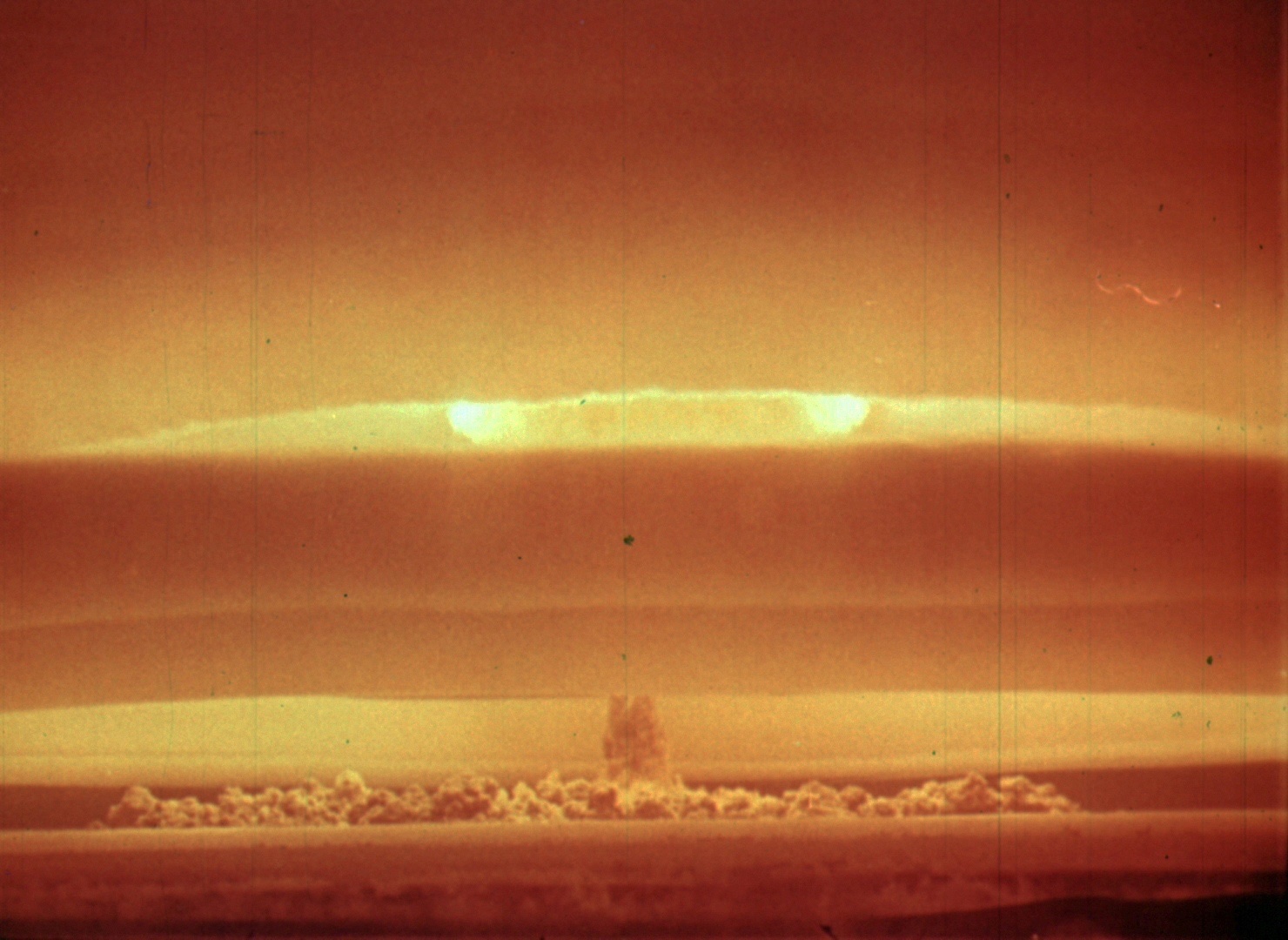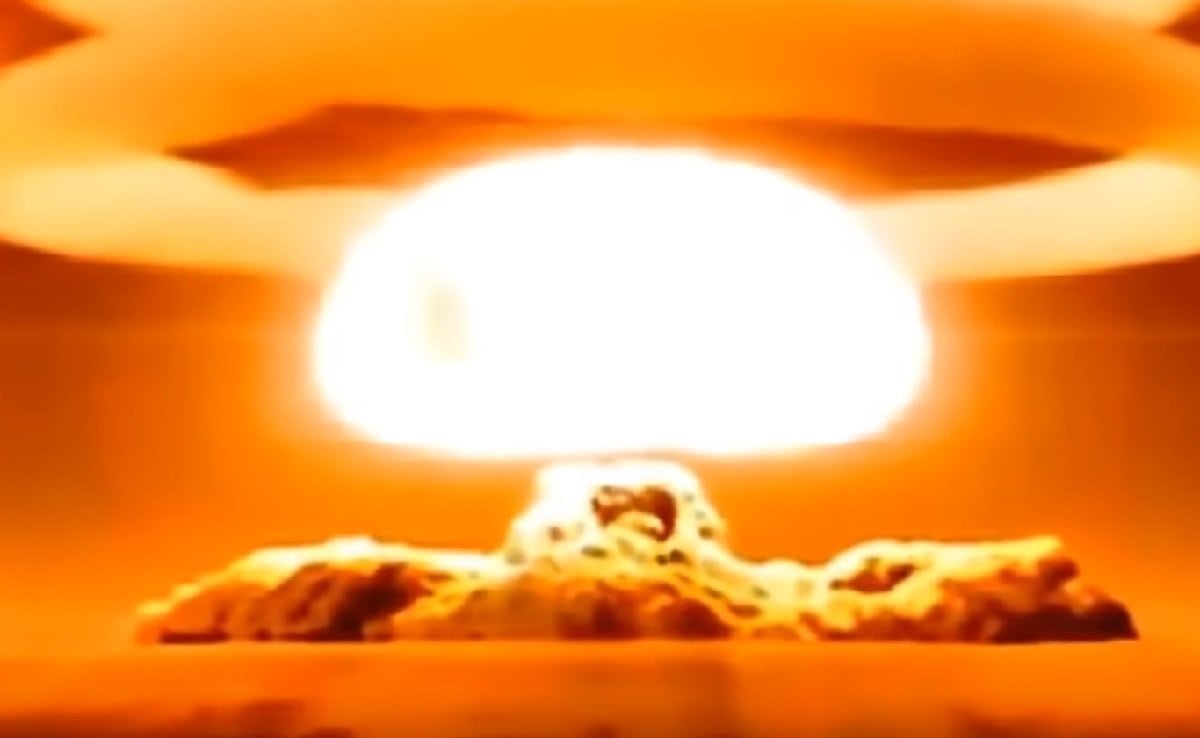A Russian scientist who created the Soviet Union’s first thermonuclear bomb (or Hydrogen Bomb/H-Bomb) was recently found dead in his Moscow apartment.
Based on a note found next to the body that bid goodbye to his family, it has been concluded that he committed suicide.
According to TASS, Grigory Klinishov was found “dead in an apartment on Kosmodamianskaya Embankment.”
Klinishov was in his early 90s and was believed to have died by June 19. Born in 1930, he studied physics, mathematics and received the Lenin Prize in 1962.
Following the development of the RDS-37, he was involved in the subsequent research work on other newer-generation thermonuclear devices.
? Russian nuclear physicist Grigory Klinishov, one of the creators of the Soviet Union’s first two-stage thermonuclear bomb RDS-37, has been found dead in Moscow apparently by suicide pic.twitter.com/jQm2qIhCbN
— OSINT Updates ? (@OsintUpdates) June 22, 2023
RDS-37 was the first Soviet two-stage thermonuclear bomb. It was tested on November 22, 1955, at the Semipalatinsk training ground in Kazakhstan, where it was dropped from a Tu-16 bomber.
“The nominal power of the bomb was about 3 Megatons (MT), but during the test, it was reduced by about half to 1.6 MT. Approximately 5-7 minutes after the explosion, the height of the radioactive cloud reached 13-14 kilometers. The diameter of the ‘mushroom’ cloud until this moment was 25-30 kilometers,” according to a post circulating on many Russian Telegram groups.
Pioneering Technical Achievement
Having been developed at the height of the Cold War by the erstwhile Union of Soviet Socialists Republics (USSR), when the US, Russia, and France were conducting dozens of nuclear tests, Klinishov’s demise assumes special significance among the scientific community.
According to a 2005 paper in the Academy of Sciences, the RDS-37 operates under a unique scientific principle described as “extraordinarily beautiful” in its function.

“The kernel of the principle consists in the radiation generated in a primary A-bomb (atomic bomb) explosion and confined by the radiation-opaque casing propagating throughout the interior casing volume and flowing around the secondary thermonuclear unit. The secondary unit experiences a strong compression under the irradiation, with a resulting nuclear and thermonuclear explosion,” said the paper.
In other words, the smaller nuclear bomb explosion triggers the hydrogen explosion. Hydrogen, long assessed by scientists as the most common element in the universe, is known for its incredibly powerful explosive force. It was naturally considered an alternative to Uranium or Plutonium nuclear weapons, which leave massive fallout and radiation.
“The advent of RDS-37 was an outstanding accomplishment of the scientists and engineers of our country,” the paper added.
Russians Hold Unbeaten Record Of World’s Hottest Bomb
Al Jazeera quoted Russian-language news outlet Mediazona, saying the yield from RDS-37 was so powerful after being dropped from the Tu-16 bomber at the test site that the resulting shockwaves broke the windows within a radius of 240 kilometers (149 miles) from the epicenter of the blast.
Casualties were also reported due to the test explosion causing structures to collapse, including a young child who died in a small town roughly 75 kilometers (47 miles) away.
The Soviet nuclear program that developed the atomic and hydrogen bomb during the early 1950s would continue to expand and accelerate during the Cold War. The USSR sought to create bigger, more powerful bombs to compensate for their perceived disadvantage in the accuracy and reliability of their nuclear delivery systems.

This would become one of the major reasons the Soviets developed and tested the massive super-bomb Tsar Bomba in 1961.
With a yield of 50 megatons of Trinitrotoluene (TNT), the Tsar Bomba, which was tested in the Russian islands of Novaya Zemlya, to date remains the most powerful nuclear device ever exploded.
The United States, on the other hand, focused its efforts on producing smaller, more effective nuclear weapons that could be deployed on its medium-range ballistic missiles (MRBM) and inter-continental ballistic missiles (ICBM).

A part of the reason could be being blocked from technology flows and access to the advent of modern computing hardware advances at the time by the US, consistent with its acrimonious relations with Russia.
Interestingly, the advent of ICBMs reduced the need for many promising fighter-bomber programs, with Canada’s Avro Arrow being a prime example.
- The author can be reached at satamp@gmail.com
- Follow EurAsian Times on Google News




